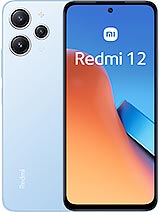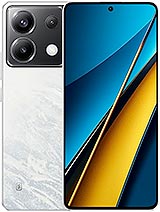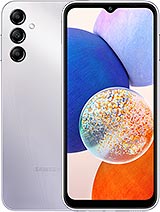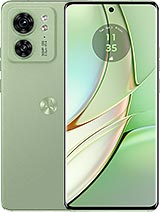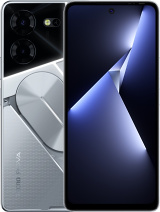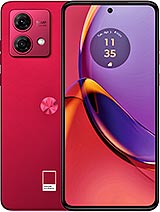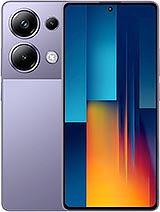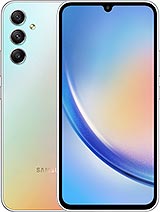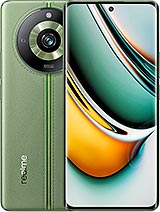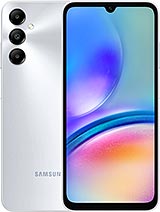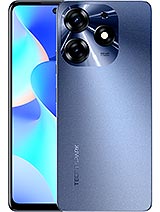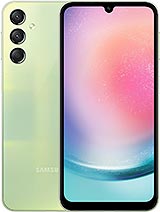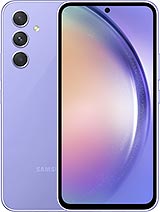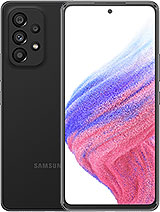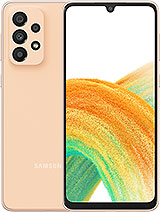Samsung Galaxy A25 review

6.5-inch display now with 120Hz refresh rate
Samsung continues to make some of the best panels in the industry and tends to equip even its more budget devices with decent models. The Galaxy A25 is a great example. It gets a Super AMOLED display, just like its predecessor, which still measures 6.5 inches in diagonal.
The 1080 x 2340 pixel resolution with a 19.5:9 aspect ratio work out to around 396 ppi of pixel density. We find that to be perfectly sharp in person.

The display bezels are still on the larger end and give away the budget nature of the device.
The new addition to the Galaxy A25 is the 120Hz refresh rate, up from 90Hz on last year's Galaxy A24 and now more in line with the 120Hz available on the Galaxy A3X family and the A34 in particular.
Before we talk more about the refresh rate, we should mention a few words about the display's performance. Samsung says that the Galaxy A25 should be capable of 1000 nits of peak brightness on its display - basically the same as last year's A24. We measured 434 nits by maxing out the manual slider, and the phone reached 1030 nits in max auto mode, basically confirming the market claims. These numbers are mostly in line with those from last year's Galaxy A24.
In terms of colors, the display is 8-bit in depth. Samsung offers two color profiles - vivid and natural with a color temperature slider and individual RGB channel adjustments in vivid mode.
The Galaxy A25 lacks HDR support. The phone itself can decode HDR10 and HLG, but not Dolby Vision or HDR10+, but the display can't show any HDR content at all. On a more positive note, the phone has the highest possible Widevine L1 DRM certification, allowing apps like Netflix to offer up FullHD streams and saturate the display resolution.
High refresh rate handling
The Galaxy A25 has 120Hz refresh rate, which is up from 90Hz in last year's A24 model. This is a great addition in itself, but unfortunately, just like on the Galaxy A34, there is practically no automatic refresh rate switching to speak of. Two "motion smoothness" options exist in settings - High and Standard. The first runs at 120Hz fixed while the second runs at 60Hz fixed.

There is no logic for switching from 120Hz to 90Hz or 60Hz automatically, as you might find in many competitors.This means you constantly waste at least some power when in 120Hz mode. On the plus side, at least high refresh rate gaming works as expected, with titles that support rendering past 60fps light enough for the Exynos 1280 to handle.
Battery life
Our new Active Use Score is an estimate of how long the battery will last if you use the device with a mix of all four test activities. You can adjust the calculation based on your usage pattern using the sliders below. You can read about our current battery life testing procedure here. For a comprehensive list of all tested devices so far, head this way.
The Galaxy A25 has a hefty 5,000 mAh battery pack on board - a capacity that most users have come to expect nowadays. The phone makes decent enough use of said battery, managing an active use score of 10:19 hours. We would have ideally liked to see some better browsing and gaming results.
Charging
The Galaxy A25 supports Samsung's 25W Super Fast Charging standard. It is Power Delivery based, but you are still best off buying one of Samsung's chargers to ensure you get the best possible charging speeds and PPS charging profiles. As we mentioned, no charger is in the box, so you have to provide your own.

We used Samsung's 25W charger for our testing, and the A25 did quite well. Pretty much in line with what we would expect from a recent 5,000 mAh Samsung device with 25W charging.
In terms of actual numbers, we managed to get our A25 from 0% to 27% in 15 minutes and up to 49% in half an hour. A full charge took 84 minutes.
Speakers
The Galaxy A25 has a hybrid stereo speaker setup. This is a new addition this year. An upgrade over the mono speaker of the A24 and more in line with the setup on the A34. One dedicated speaker is on the bottom of the phone, and an amplified earpiece handles the other channel. Naturally, this means that the balance between the two isn't great. The bottom speaker is definitely louder and clearer. However, the stereo effect the two produce together is pretty convincing and pleasant to use for multimedia consumption.
In terms of loudness, our Galaxy A25 unit managed -26 LUFS, which just barely qualifies for our "VERY GOOD" grade. This is a marked improvement over the AVERAGE score of the Galaxy A24 and pretty much perfectly in line with the performance of the Galaxy A34.
The actual quality of the sound is also very good and very similar to the Galaxy A34. There is no noticeable distortion, even at high volumes, and the sound stage is fairly rich. The mid-tones could have been presented a bit better, but the highs sound great, and there is even some bass. There is Dolby Atmos on board, a full-featured equalizer and UHQ upscaler.
Connectivity
As already mentioned, the Galaxy A25 is a 5G device. It offers 5G dual stand-by on both of its Nano-SIM slots. The second slot is a hybrid affair. It can take either a Nano-SIM card or a microSD card for expandable storage. We have information that there is a single SIM variant of the Galaxy A25 out there as well, but almost every store listing we have seen is for the dual SIM one.
For local connectivity the A25 has dual band Wi-Fi 5/ac and Bluetooth 5.3. Some regions get NFC, while FM radio doesn't seem to be available anywhere. However, it is still worth checking with your local retailer.
There is no IR blaster on board, but there is a 3.5mm audio jack, as we've already mentioned.

You get GPS, GLONASS, GALILEO, BDS and QZSS support for positioning. The onboard Type-C port has USB Host/OTG functionality but nothing else fancy in features like video output. The Type-C port is backed up by a USB 2.0 connection, which means a theoretical maximum data transfer rate of 480 Mbps.
The Galaxy A25 has a decent set of sensors, but unfortunately, it does not include a proper hardware proximity sensor. You get a virtual proximity sensor that mostly gets the job of turning off the display during calls done. It is not ideal, though. Other than that, you get an ICM42632M accelerometer and gyroscope combo, an STK31610 light sensor, and an AK09918C magnetometer. There is no barometer.
Reader comments
- C4RB0N3T4
- 07 Apr 2025
- raQ
I'm living in a country with poor connection and i don't have any problems calling or using the internet with this phone
- yonda
- 07 Apr 2025
- NHZ
the phone is life
- Anonymous
- 01 Apr 2025
- uu4
The new A series sucks so bad. All except the A56. But even it is too pricey right now.
